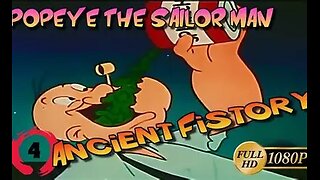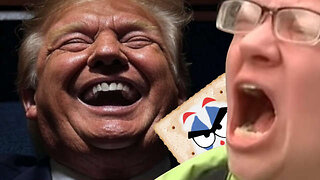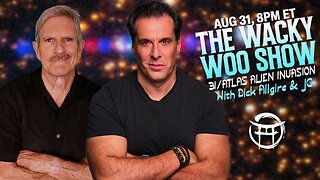Premium Only Content

Carnival of Souls (Horror, 1962)
Carnival of Souls is a psychological horror film with elements of supernatural mystery. It’s often categorized as an early example of low-budget independent cinema that blends eerie atmosphere with existential dread, rather than relying on overt gore or jump scares. Its moody tone and surreal visuals have also led some to compare it to art-house cinema or even a precursor to psychological thrillers.
Plot
The story begins with a drag race gone wrong in Kansas, where a car carrying three young women, including Mary Henry (Candace Hilligoss), plunges off a bridge into a river. Miraculously, Mary emerges from the water as the sole survivor, though she’s shaken and disoriented. She leaves town to start a new job as a church organist in Utah, but strange events begin to unfold. On her drive, she glimpses an abandoned carnival pavilion by the Great Salt Lake and sees a pale, ghoulish figure (played by director Herk Harvey) staring at her through the car window.
Once settled, Mary experiences bizarre phenomena: she becomes invisible and inaudible to others at random moments, hears haunting organ music, and feels an inexplicable pull toward the deserted carnival. She’s pursued by the ghostly figure and encounters other spectral beings, all while grappling with detachment from the living world. Her interactions with a sleazy neighbor, John Linden (Sidney Berger), and a concerned doctor (Stan Levitt) highlight her growing isolation. The film builds to a chilling climax at the carnival, where Mary confronts a dance of the dead—revealing her own fate in a twist that blurs life, death, and the afterlife.
The plot is deliberately ambiguous, leaving viewers to question whether Mary’s experiences are supernatural, psychological, or a liminal state between life and death.
Cast
Candace Hilligoss as Mary Henry: A former Broadway actress, Hilligoss delivers a detached yet vulnerable performance as the film’s protagonist. This was her most notable role, though she appeared in a few other minor films.
Herk Harvey as The Man: The director himself plays the creepy, pale-faced apparition haunting Mary. His gaunt features and silent menace make the character unforgettable.
Sidney Berger as John Linden: Berger plays Mary’s lecherous neighbor with a mix of charm and creepiness.
Frances Feist as Mrs. Thomas: Mary’s kindly landlady, adding a touch of normalcy.
Art Ellison as Minister: The church minister who hires Mary, representing the film’s subtle religious undertones.
Stan Levitt as Dr. Samuels: A doctor who tries to help Mary, though his role is small.
The cast is mostly composed of non-professional actors or locals from Lawrence, Kansas, where much of the film was shot, giving it an authentic, unpolished feel.
Fun Facts
Micro-Budget Origins: The film was made for about $33,000, funded partly by Harvey’s savings and contributions from crew members. It was shot in three weeks with a skeleton crew.
Inspiration on Location: Herk Harvey got the idea for the film after driving past the abandoned Saltair Pavilion near the Great Salt Lake in Utah. The eerie, decaying structure became the iconic carnival setting.
One-Man Show: Harvey not only directed and acted but also co-produced the film. He was a veteran of industrial and educational films, and Carnival of Souls was his only feature-length narrative movie.
Organ Music: The haunting score by Gene Moore, played on a pipe organ, was inspired by Mary’s profession and adds to the film’s uncanny vibe. Hilligoss actually learned to mime playing the organ for authenticity.
Cult Status: Initially a box-office flop, it gained a following through late-night TV airings and public domain status after its copyright lapsed. It’s now praised for influencing horror auteurs like George A. Romero (Night of the Living Dead) and David Lynch (Eraserhead).
Real-Life Touches: The car wreck scene used a real car pulled from a river with a crane, and the bridge is a real location in Kansas—adding gritty realism to the low-budget production.
Single Take Magic: Many scenes, like the carnival dance, were filmed in one take due to time and budget constraints, yet they achieve a dreamlike quality.
Carnival of Souls is a slow-burn gem that’s less about shocks and more about atmosphere, making it a standout in 1960s horror.
-
 7:00
7:00
Silver Screen Echoes
1 month agoPopeye - Ancient Fistory (Cartoon, 1953)
441 -
 2:25:11
2:25:11
TheSaltyCracker
3 hours agoTrump Is Not Dead ReEEeStream 8-31-25
49.2K78 -
 LIVE
LIVE
THOUGHTCAST With Jeff D.
1 hour agoLabor Day Weekend FORTNITE With THOUGHTCAST Jeff & the squad
53 watching -
 DVR
DVR
Rallied
4 hours ago $2.24 earnedSolo Challenges All Day
26.5K1 -
 LIVE
LIVE
iCheapshot
4 hours agoCall of Duty: Black Ops Campaign
38 watching -
 4:39:16
4:39:16
Meisters of Madness
5 hours agoMadness in a Pod
6891 -

HELMETFIRE
1 hour ago🟢GAMING WITH FIRE EP9🟢
587 -
 1:24:08
1:24:08
Jean-Claude@BeyondMystic
13 hours ago🌀 THE WACKY WOO SHOW 3I ATLAS ALIEN INVASION with DICK ALLGIRE & JC - AUG 31 , 20254
34.9K50 -
 2:26:21
2:26:21
vivafrei
12 hours agoEp. 279: Patel's GF Sues for Defamation! Rogue Judges vs. Trump! Raja Jackson, Kick Stream & MORE!
134K69 -
 18:52
18:52
Colion Noir
9 hours agoCourt Rules You Don't Need AR-15s For Self Defense, Mayor's Message If You Love Kids Ban AR-15s
25.9K60